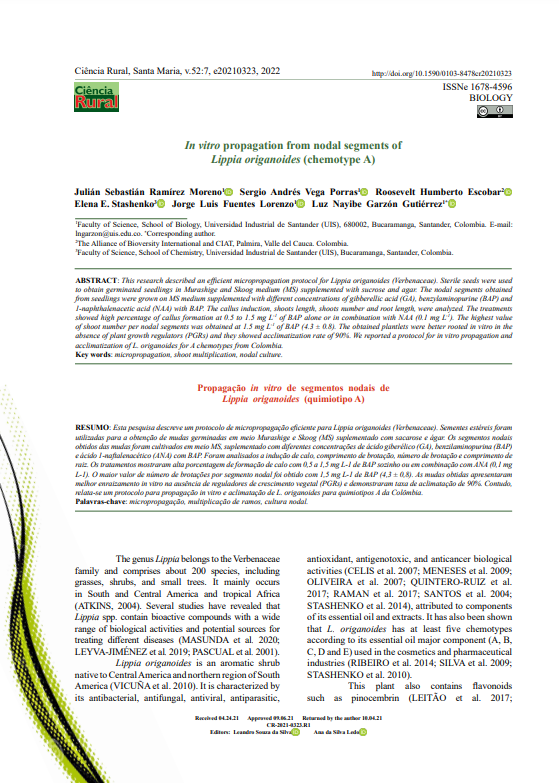This research described an efficient micropropagation protocol for Lippia origanoides (Verbenaceae). Sterile seeds were used to obtain germinated seedlings in Murashige and Skoog medium (MS) supplemented with sucrose and agar. The nodal segments obtained from seedlings were grown on MS medium supplemented with different concentrations of gibberellic acid (GA), benzylaminopurine (BAP) and 1-naphthalenacetic acid (NAA) with BAP. The callus induction, shoots length, shoots number and root length, were analyzed.
The treatments showed high percentage of callus formation at 0.5 to 1.5 mg L-1 of BAP alone or in combination with NAA (0.1 mg L-1). The highest value of shoot number per nodal segments was obtained at 1.5 mg L-1 of BAP (4.3 ± 0.8). The obtained plantlets were better rooted in vitro in the absence of plant growth regulators (PGRs) and they showed acclimatization rate of 90%. We reported a protocol for in vitro propagation and acclimatization of L. origanoides for A chemotypes from Colombia.
Ramírez Moreno, J.S.; Vega Porras, S.A.; Escobar, R.H.; Stashenko, E.E.; Fuentes Lorenzo, J.L.; Garzón Gutiérrez, L.N.

